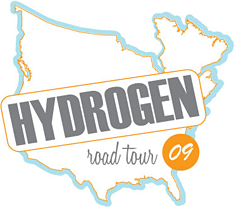LIVERMORE, Calif. — As Sandia National Laboratories prepares to cohost the upcoming Hydrogen Road Tour in Livermore, Calif., Sandia’s hydrogen program manager, Jay Keller, asserts that recent advances in hydrogen technology are real and significant.
“Sandia has been at the forefront of significant technical improvements in hydrogen that have been made over the past several years,” says Keller, who oversees a hydrogen research portfolio that includes programs in hydrogen delivery, storage, production and safety, codes and standards.
As far as commercialization of fuel cell vehicles is concerned, Keller says the automobile manufacturers themselves are best-positioned to determine their marketability. And the industry’s position is clear. According to Bloomberg, Toyota said earlier this year that it will be selling fuel-cell cars by 2015, and Bloomberg also reported that Hyundai Motor Co. and Daimler AG both have plans for selling hydrogen vehicles to retail customers.
“If you listen to those directly responsible for the selling of hydrogen fuel cell vehicles to the consumer, it seems clear that commercialization and marketability of these vehicles is moving a lot faster than we anticipated,” says Keller.
Hydrogen vehicles to be featured at upcoming Road Tour Keller and his Sandia colleagues will have an opportunity to showcase the progress at the upcoming Hydrogen Road Tour — consisting of 12 hydrogen fuel cell-powered vehicles from seven major automakers, including Mercedes-Benz, GM, Honda, Toyota and others. The vehicles will be featured in downtown Livermore on Thursday, May 28, from 11 a.m. to 1 p.m. The public is welcome.
Several of the hydrogen-fueled cars will be displayed in the downtown parking lot between First Street and Railroad Avenue (the old Lucky supermarket location), and some will be available for short test drives and refueling. Sandia scientists, along with engineers from automotive companies, will be on hand to talk to citizens about current hydrogen research activities and the viability of fuel cell vehicles.
Progress in hydrogen R&D is real and significant According to the California Fuel Cell Partnership, the hydrogen research community has consistently met or exceeded the DOE Hydrogen Program’s ambitious goals for energy efficiency, vehicle range, system durability, and reduced costs. Sandia, says Keller, has been involved in several key advances.
“Through our safety, codes and standards work, we’ve been instrumental in the National Fire Protection Association’s rewriting of the model codes that local municipalities need in order to put hydrogen in commercial applications,” Keller says. “This is not insignificant, as those agencies now have formal, written safety codes that allow them to work hydrogen into their commercial infrastructure.”
In addition, Sandia’s work on a hydrogen internal combustion engine — considered a transition strategy designed to pave the way toward fuel cell vehicles — is supported by both Ford and BMW.
Longer-term, said Keller, the DOE’s Metal Hydride Center of Excellence (MHCoE), which is led by Sandia, continues to make progress finding a suitable new material that can soak up and concentrate hydrogen into a small volume, release the hydrogen when needed and then repeat this cycle over and over for vehicular applications.
As the lead organization for the MHCoE effort, Sandia coordinates the work of some 18 organizations engaged in several promising areas of research. Sandia is also contributing to materials development work and helping direct research by refining materials theory.
Road Tour will give public hands-on experience The tour, organized by the California Air Resources Board, California Fuel Cell Partnership, National Hydrogen Association, U.S. Fuel Cell Council and Powertech Labs (on behalf of British Columbia), is spending eight days traveling from California to Canada. The Livermore stop has been organized by Sandia National Laboratories, in partnership with the City of Livermore and Livermore Downtown, Inc.
During the tour, 12 fuel cell vehicles from seven major automakers will drive from Chula Vista to Vancouver, British Columbia, where a fleet of fuel cell buses will be used at the 2010 Winter Olympic Games. The stops provide the media, invited VIPs, and the general public with a hands-on experience and an opportunity to drive some of the cars.
